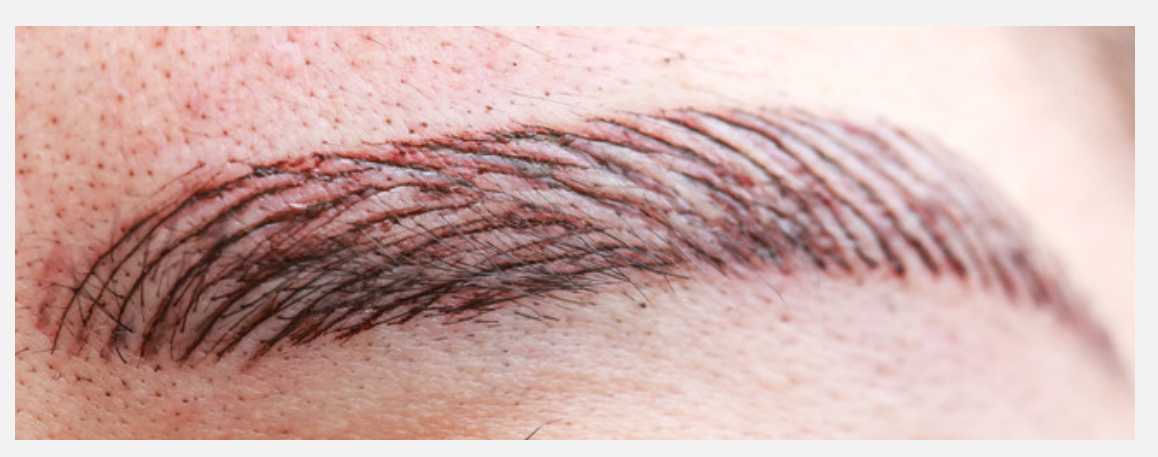When done correctly under topical anesthetic, microblading can be painless. The microblading artist can apply a topical anesthetic before the treatment for approximately 20 minutes. This initial procedure is called the pre-numb.
The pre-numb anesthetic comes in a cream form, and is usually 5% – 10% lidocaine – depending on the law and what the artist’s license allows.
There are pros and cons to pre-numbing the skin before Microblading
The most obvious benefit to pre-numbing the skin is that the skin will be completely numb during the first pass of the treatment. The pre-numb can cause the skin to be a bit harder to cut when we are applying the first pass, especially when are are creating thin hairstrokes. It’s best that the client can withstand the small amount of pain in order to have the best result. If the client absolutely cannot stand the discomfort (which is rare), then I will apply pre-numbing solution. 95% of clients report the discomfort to be a 3 out of 10, 10 being the worst. It’s important that the artist be highly skilled in depth control and feel of the skin to make the first pass without anesthetic painless.
After the first pass, once the skin is opened, we can apply the secondary anesthetic. This can be in the form of lidocaine, benzocaine, tetracaine, or a combination of the three. The secondary anesthetic comes in either a gel or liquid form, and is designed to enter broken skin quickly. The numbing effect takes place immediately and can last up to 45 minutes to an hour.
Microblading done correctly can result is a natural healed result
As an international trainer, the most common misconception I run into with both professionals and students alike, is that microblading must be deeper into the skin in order for the pigment to take. This is very much false. The correct way to implant microblading is very superficial, into the basal layer of the skin. This is just under the epidermis. When we are working, there should me minimal blood in most cases. This of course depends on the health of the skin we are working on. The strokes should be easy and light.
Microblading performed at the right depth and angle
Microblading Gone Wrong
For those new to microblading, I would like to share with you guys what not to do when providing this service. In the photo below, I have included what Microblading too deep looks like. You can see the raised skin around the cuts, and of course the blood. When microblading correctly, there should be minimal blood in most cases. Also, we are to be going lighter with our pressure. The deeper we go into the skin, the worse our healed results will be. Microblading too deep will result in:
- Cool or grey healed result
- Migration or blurring of the hair-strokes after healing
- Poor color saturation due to the depth of the work
- Scarring
- Pain and discomfort during treatment

Microblading done too deep and with too much blood
In summary, it is vitally important to choose a microblading artist who is highly trained and experienced. Ask your service provider questions before booking an appointment to be sure they are qualified to provide the best treatment for your face.
Owner and Creative Director
